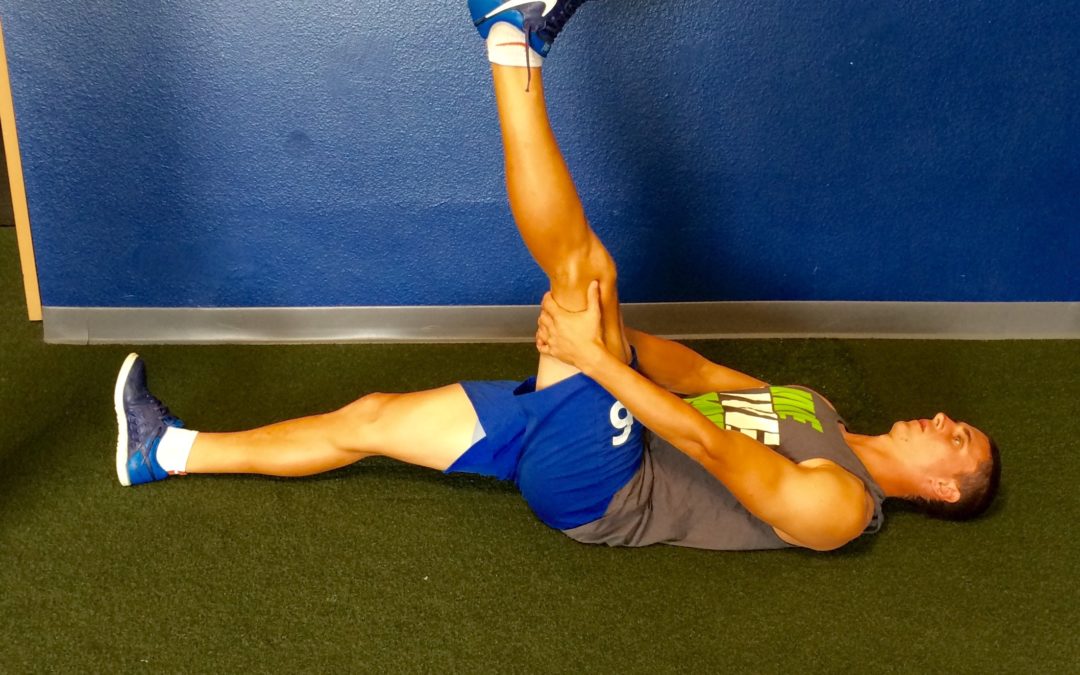It’s getting late in the season and we all have muscle aches and pains from all the games and practices we put ourselves in. If you find yourself in a situation of having chronically sore hamstrings, it is most likely that you do not need more hamstring strengthening. What is most likely the case is that the hamstring’s synergists need to be strengthened to reduce the hamstring’s workload. Synergists are muscles that work together for joint motion. Two major synergists for the hamstrings are the Gluteus Maximus and abdominals. So, for healthy hamstrings what we need are glutes and abs!
So first we will take a look at how the hamstrings interact with the muscles of the anterior core. The hamstring pulls downward on a point of the pelvic bones which causes posterior pelvic tilt (flattening the lower back). The abdominal muscles pull upward on the anterior part of the pelvis which also causes posterior pelvic tilt. In other words, these muscles work synergistically to tilt the pelvis posteriorly. The hamstring also has a synergistic relationship with the gluteus maximus muscle. Both muscles have attachments above and below the hip joint. Therefore, both muscles can extend the hip.
However, if this synergy is disrupted an injury can occur because one of these muscles will become overworked. Most often what we see is weak glutes. Glute weakness causes the hamstring to perform most of the work in extending the hip. This excessive work leads to hamstring strain and again hamstring strengthening will simply reinforce the faulty pattern of the hamstring being the dominant hip extensor. Therefore, in this situation, the best rehab program would be to strengthen the glute
These relationships work great because they spread out the work that each muscle group is required to do and help us avoid injury. However, if this relationship is disrupted an injury can occur. It is more common to see weak abdominals or glutes which will disrupt this synergy. When the abdominals or glutes cannot pull their load on the pelvis with sufficient force then the hamstrings become overworked. This results in a chronic hamstring strain. In this case, hamstring strengthening will not rehabilitate the injury. Hamstring strengthening will continue to reinforce the flawed pattern. The best course for correcting the hamstring injury is abdominal and or glute strengthening. The hamstring soreness is treated with soft tissue techniques including but not limited to massage, cupping, and stretching as dictated by a return to play protocol with your healthcare professional.
Mike Hannegan is an Athletic Trainer and Strength Coach with over 25 years of experience including 10 years in the NHL between the Anaheim Ducks and St. Louis Blues. He is currently the Director of the Compete Sports Performance and Rehabilitation facility inside The Rinks Yorba Linda Ice located in beautiful Orange County, CA. He can be reached at mike@competeperformance.com.

